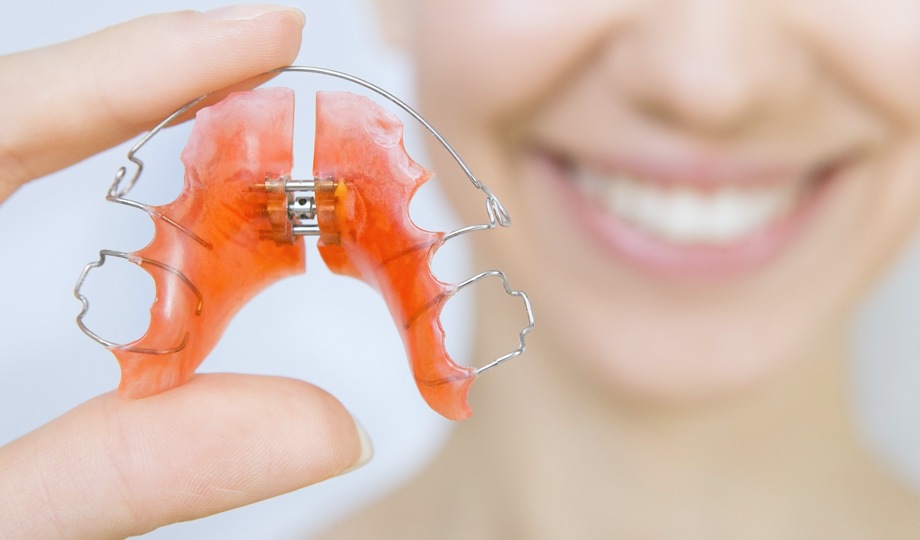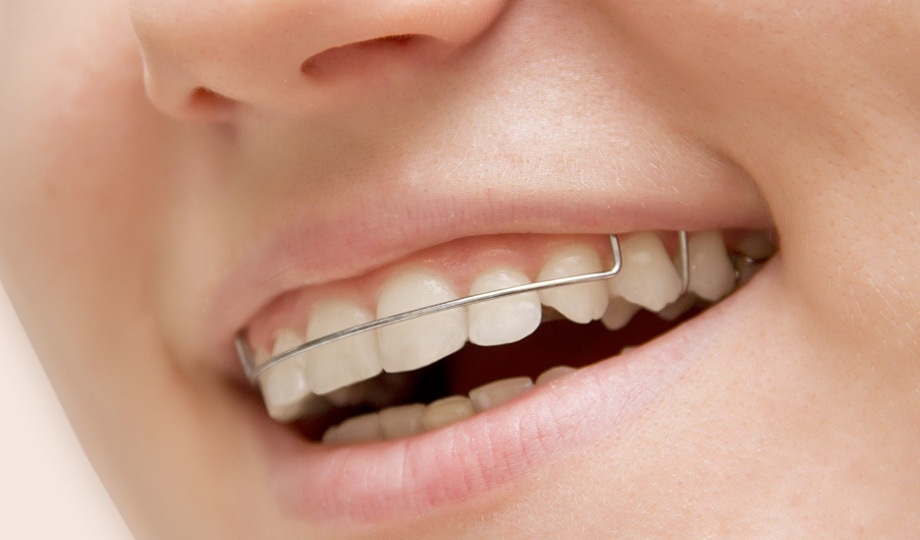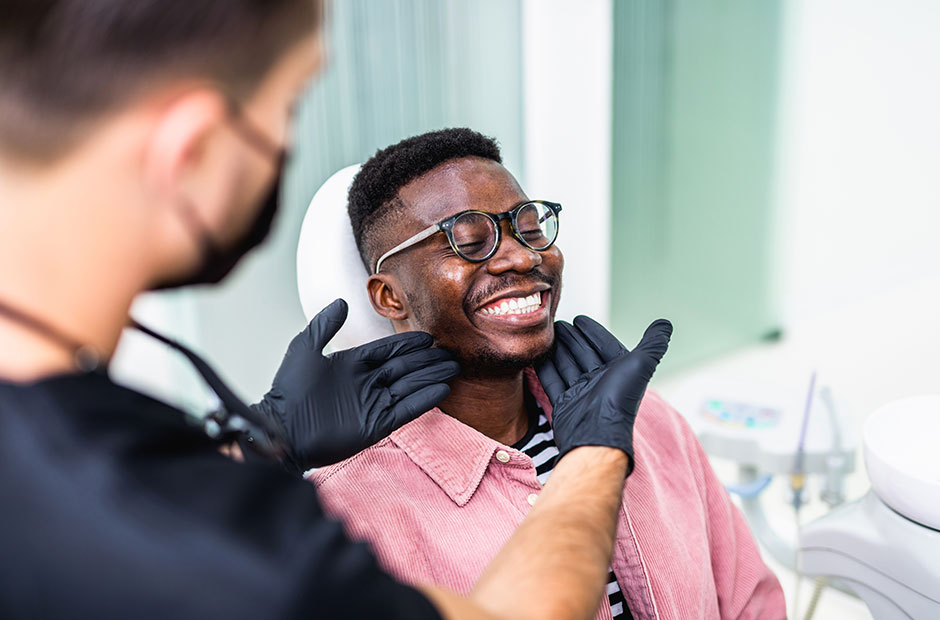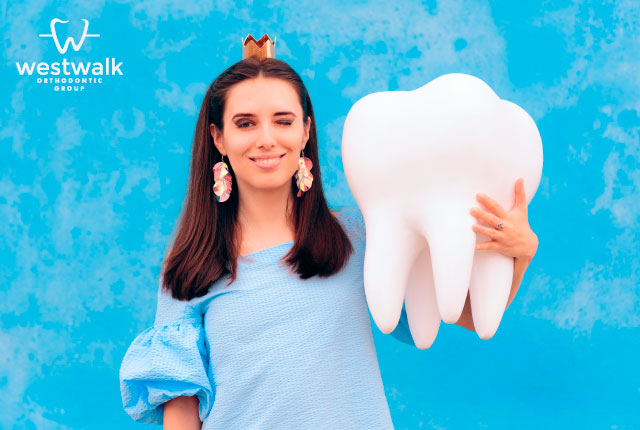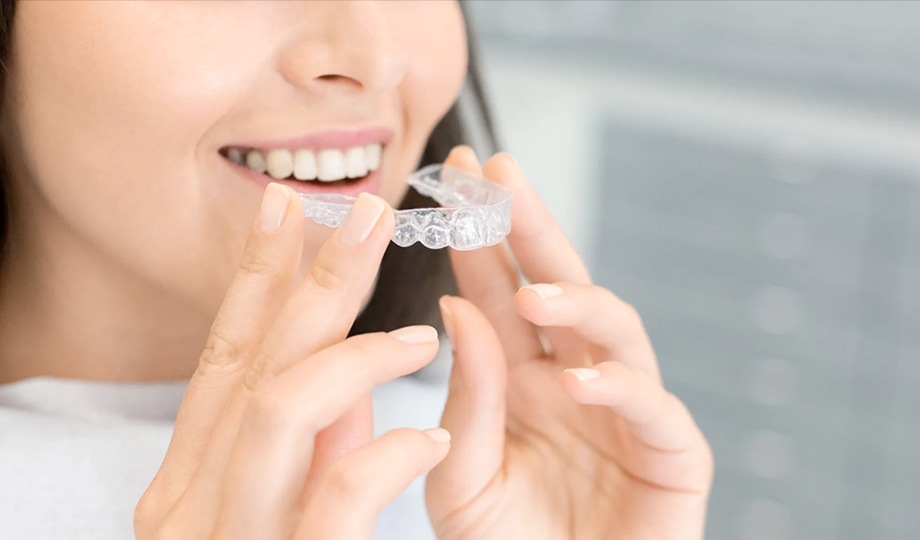Congratulations on your beautiful new smile! Now, to ensure it stays as beautiful as it is the day your braces are removed, it’s crucial to wear a retainer. Retainers prevent undesired tooth movement. Most patients will use a removable retainer to hold their new smile, however, some patients may benefit from a fixed retainer.
Unlike a removable retainer, a fixed retainer cannot be taken out of the mouth by the patient. Instead, fixed retainers are bonded to the back surface of the teeth. This ensures they remain in place, always working to hold your teeth in their ideal locations.
Can my friends see the fixed retainer when I am smiling or speaking?
The retainer is barely noticeable because it is bonded to the inside surface of your teeth.
Does a Fixed Retainer, Hurt?
No. Placing a fixed retainer involves essentially the same steps as placing braces, which is a simple process and completely pain-free. Furthermore, a fixed retainer is just holding your orthodontic correction that has already been completed, so no discomfort should be expected.
How do you floss with a fixed retainer?
At Westwalk Orthodontic Group in Norwalk and Westport, we demonstrate how to floss with a fixed retainer. We show you a few easy techniques to allow you to choose which one is your favorite. Many patients find a Waterpik is an effective way to clean around a permanent retainer.
What happens if a fixed retainer breaks or comes off?
Unfortunately, fixed retainers can dislodge from the surface of a tooth. You may bite on a hard food, like a nut, and break the bonding material between the retainer and the tooth surface. In this situation, you should call your orthodontist so we can repair the bonding. We’ll remove any residual bonding material and re-bond the fixed retainer to the tooth.
In some circumstances, the entire fixed retainer can dislodge from the back surface of the teeth. Again, you should schedule an appointment immediately to prevent any undesirable tooth movement in the meantime.
In this situation, the repair involves two steps. First, the remaining dental adhesive needs to be removed from the back side of the teeth. Then the fixed retainer is replaced.
Types of Braces Treatment
- Caring For Braces
- Carriere Correctors
- Clear Braces
- Common Problems
- Palatal Expansion
- Removable Retainers
When is a fixed retainer recommended?
In our office, we use a wide variety of retainers, and we recommend particular retainers based on each individual’s bite relationship and dental alignment prior to the start of orthodontic treatment.
There are two situations where we typically recommend a fixed retainer. The first would be a space between the upper two front teeth prior to starting orthodontic treatment. Of course, we will close the space with braces or aligners, but we want the space to stay closed and a fixed retainer will be the ideal option to ensure the teeth cannot drift apart.
This type of space has a high relapse potential with a tendency to open again after treatment. In this situation, we prefer to use a fixed retainer on the inside of just the two upper front teeth.
The second indication for a fixed retainer would be a significant amount of crowding in the lower front teeth prior to starting orthodontic treatment. We do the work of aligning all the teeth with braces or aligners to give you a gorgeous smile, but we want the alignment to remain ideal. However, rotations and crowding of lower front teeth have a high potential for relapse. In this situation, we use a fixed retainer placed on the inside surface of the teeth from the lower right canine to the lower left canine.
In both cases, the fixed retainer is not noticeable, since it’s placed on the tongue side of the teeth. The fixed retainer is extremely thin, so you won’t need to worry about your speech being affected.
In Your Office, How Long Do You Watch The Patient in This Retainer Phase?
At Westwalk, we monitor our patients for two years after braces are removed or aligner therapy is completed. Appointments are less frequent during this phase, but the time period is still important to ensure the stability of the bite and tooth alignment.
For teenagers, we evaluate the eruption of wisdom teeth during this two-year span after braces and recommend the best course of action.

